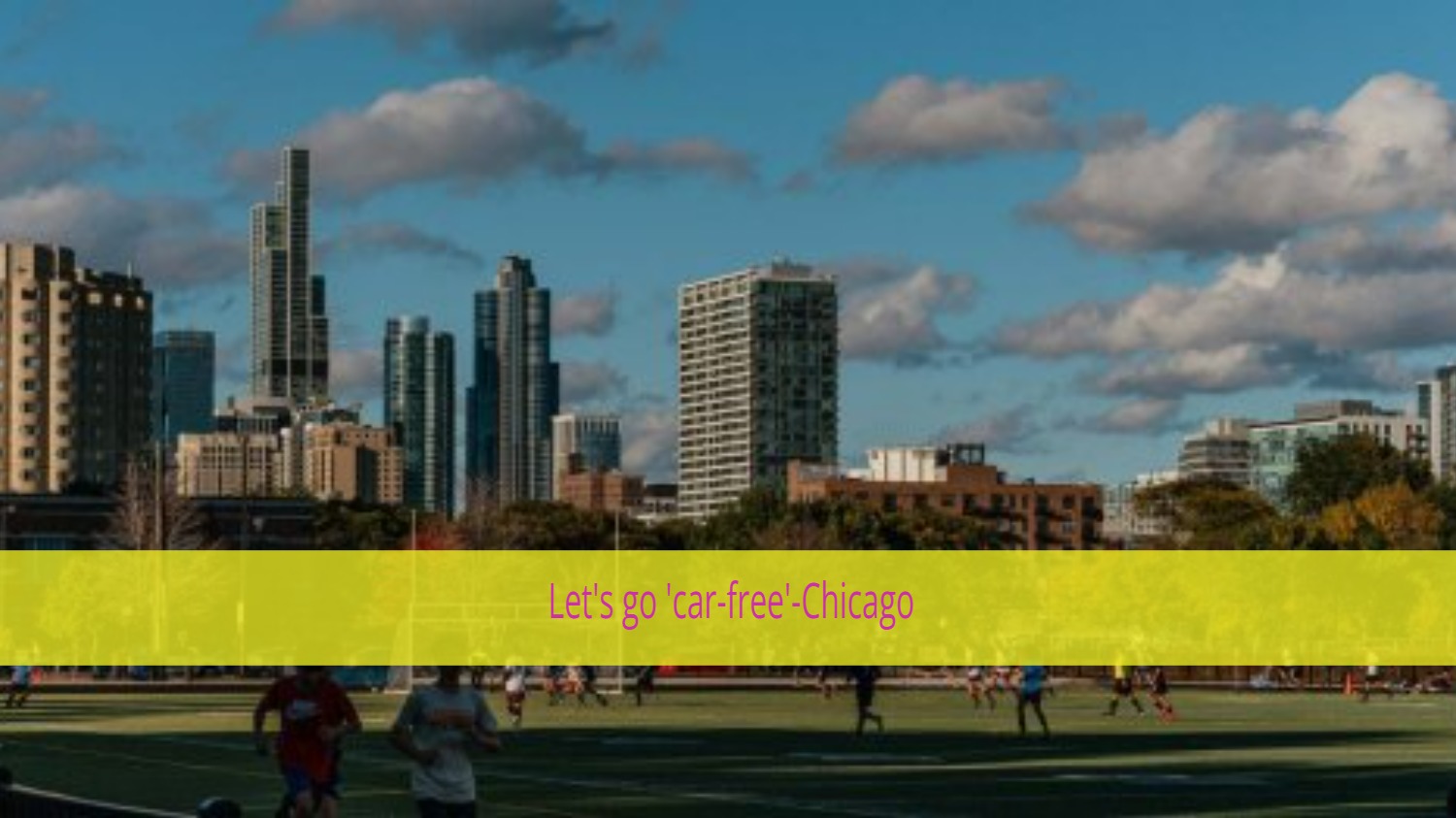Chicago city government is currently focusing on a ‘transit-oriented development’ by reducing the use of motor vehicles. The city should be “designed for people,” Housing Commissioner Marisa Novara said in an interview. When we put cars before people, we risk losing human connection, which is where some cities have gone wrong. Bicycle, public transit, and environmental advocates have long argued that cities place too much emphasis on automobiles at the expense of other modes of transportation.
Traffic Deaths Resulted in the Arousal of ‘Car-Free’ Movement

Some members of the Chicago City Council are outraged by what they see as the city’s alleged deference to cars in light of a recent rash of traffic fatalities in the city, in which victims ranged in age from infants to toddlers. As a result of widespread hostility toward driving, a “car-free” movement has emerged. Many municipal officials, however, see that as unrealistic. Lightfoot dismissed concerns that his administration’s rollout of a free prepaid gas card plan in the spring would encourage the use of fossil fuels by noting that “back on planet reality,” many residents live in public transit deserts and require a car to get around.
Opinions and Ideas About the New Movement

Novara has stated that in her perfect world, every Chicago resident would have access to multiple modes of transportation, including walking, public transportation, bicycling, and driving. She also mentioned that the South, Southwest, and West sides have “abundant” public transportation options, though some areas may have more bus routes than train ones. There is nothing wrong with having a car or driving one, according to Novara. We’re just saying it has its place and that people in this city should have a variety of transportation options.
Connected Communities is based on the concept of “transit-oriented development,” which was initially implemented to encourage residential and commercial growth near train stations and, more recently, along bus lines. Chicago’s then-mayor Rahm Emanuel gave the idea a boost in 2013 with an ordinance, but the majority of the resulting construction didn’t begin until the northern and northwest neighborhoods until 2019.
According to Audrey Wennink, director of transportation for the Metropolitan Planning Council, the parking provisions in the new ordinance could play a role in encouraging residents of Chicago to forgo car ownership and likely signal that the city is moving toward incentivizing other ways besides vehicles, of getting around.
She thinks reducing car use in Chicago is achievable with additional measures, but acknowledges that doing so will be challenging. She argued that despite the CTA’s problems, Chicago has an advantage because the foundation for a robust public transit system already exists.
Reduce Attraction Toward Cars
When it comes to the cost of housing, Wennink believes that “people don’t recognize that a significant proportion of that cost, historically speaking, goes to the parking.” According to data collected by the Department of Housing, “you need to make driving less attractive and make these other options more attractive so people make sides, downtown, and the West Loop.
The Connected Communities ordinance limits new residential buildings near train stations to no more than one parking space for every two units, among other measures meant to speed up development in transit-rich areas. To build at a higher ratio than one-to-one, developers must get city approval.

According to census data, the percentage of Chicagoans who drove alone to work in 2019 was about 48%, the lowest it has been in more than a decade, suggesting that the city is becoming less car-dependent, as stated by Krishnamurthy, the deputy commissioner of the Chicago Department of Transportation
Krishnamurthy interpreted this as evidence of a “latent demand,” or “latent interest,” in alternative modes of transportation. People are using a wide variety of channels nowadays, like an appetizing salad. And I think that’s great because it means we’re not stuck looking at a city’s transportation network through the lens of a single mode of transportation.
Additionally, the ordinance eliminates on-site parking mandates for affordable housing throughout the city and extends the current limits on parking requirements near transit stations to four blocks, and near-certain bus corridors, to two blocks. The law also mandates pedestrian-friendly design and prohibits the construction of any new curb cuts or driveways within half a mile of train stations without prior city approval.

